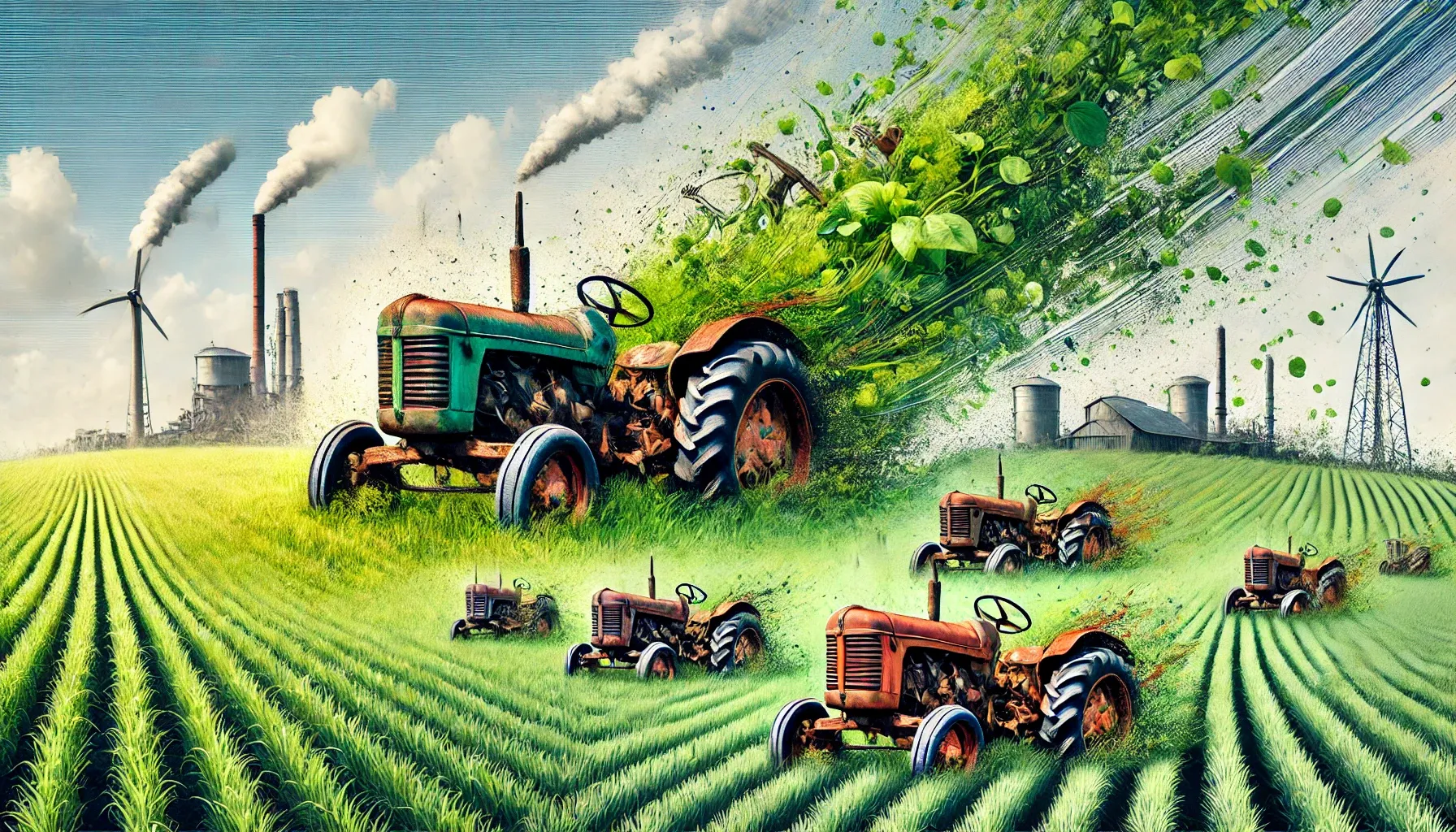UPSC
Indian Express Concise
India’s Farm Mechanisation: Beyond Tractors
Last Updated
1st April, 2025
Date Published
1st April, 2025
Share This Post With Someone

Context:
Published on March 31, 2025, in The Indian Express, this article by Harish Damodaran explores the evolving landscape of farm mechanisation in India. While tractors have long dominated the sector, the focus is shifting toward diverse machinery like rotavators and harvesters, driven by labour shortages and market growth. This shift offers insights into agricultural transformation, economic potential, and policy implications for India’s rural economy.
Key Information in Points:
- Tractor Market Overview: India’s tractor market stands at 9 lakh units annually, valued at over ₹60,000 crore, with a 45 hp tractor costing around ₹7 lakh.
- Beyond Tractors: Mechanisation now extends beyond tractors, which provide motive power, to equipment like rotavators that enhance tillage efficiency.
- Rotavator Advantage: A tractor-powered rotavator replaces traditional ploughs, harrows, and cultivators, performing primary and secondary tillage in one pass, digging 8-12 inches deep to break compacted soil for better aeration, water infiltration, and root penetration.
- Market Growth: The farm machinery market (excluding tractors) is growing faster, with volume growth twice that of tractors, as per Rajat Gupta of Tractor Junction.
- Industry Expansion: Major tractor companies like Mahindra & Mahindra (M&M) are entering the machinery space with a ₹100-crore plant in Pithampur, Madhya Pradesh (opened in 2021), producing 1,200 harvesters and 3,300 rice transplanters annually.
- Specialised Machinery: M&M also operates a rotavator factory in Nabha, Punjab, while equipment like sugarcane harvesters and Happy Seeders cater to specific crops or operations.
- Versatility of Tractors: Tractors support diverse tasks—tillage, haulage, and non-field uses—unlike crop-specific machines like harvesters.
- Custom Hiring Model: Individual owner-operators rent out machinery for harvesting or transplanting, offering a sustainable mechanisation route for small farmers.
- Market Size Estimate: Anusha Kothandaraman of M&M estimates India’s non-tractor agri-machinery market at over ₹10,000 crore, with a 60-40 split between organised and unorganised sectors.
- Global Comparison: Globally, the $100 billion farm machinery market surpasses the $60 billion tractor market, while in India, tractors dominate at ₹60,000 crore against ₹10,000 crore for machinery, indicating growth potential.
- Labour Shortages: Rising agricultural labour scarcity fuels demand for machinery like rotavators, subsoilers, harvesters, and transplanters.
- Soil Health Benefits: Rotavators and subsoilers enable deeper tilling, tapping into lower soil fertility and nutrients, maximising tractor utility.
- Machinery Types: Includes tractor-mounted implements (tillage tools, sprayers, balers, loaders, trolleys, laser land levellers) and self-propelled machines (harvester combines, rice transplanters, cane harvesters).
Key Terms:
- Farm Mechanisation: Use of machinery to replace manual labour in agricultural tasks.
- Rotavator: Tractor-powered equipment for efficient, deep tillage in a single pass.
- Tractor Market: Annual sales and valuation of tractors as a primary farm power source.
- Custom Hiring: Rental model where machinery owners serve multiple farmers on a pay-per-use basis.
- Harvester: Self-propelled machine designed for specific crop harvesting.
- Subsoiler: Equipment for deep tilling to improve soil structure and fertility.
- Tillage: Soil preparation process enhanced by mechanised tools like rotavators.
Link To The Original Article – https://indianexpress.com/article/explained/explained-economics/explained-how-indias-farm-mechanisation-is-moving-beyond-tractors-9916977/